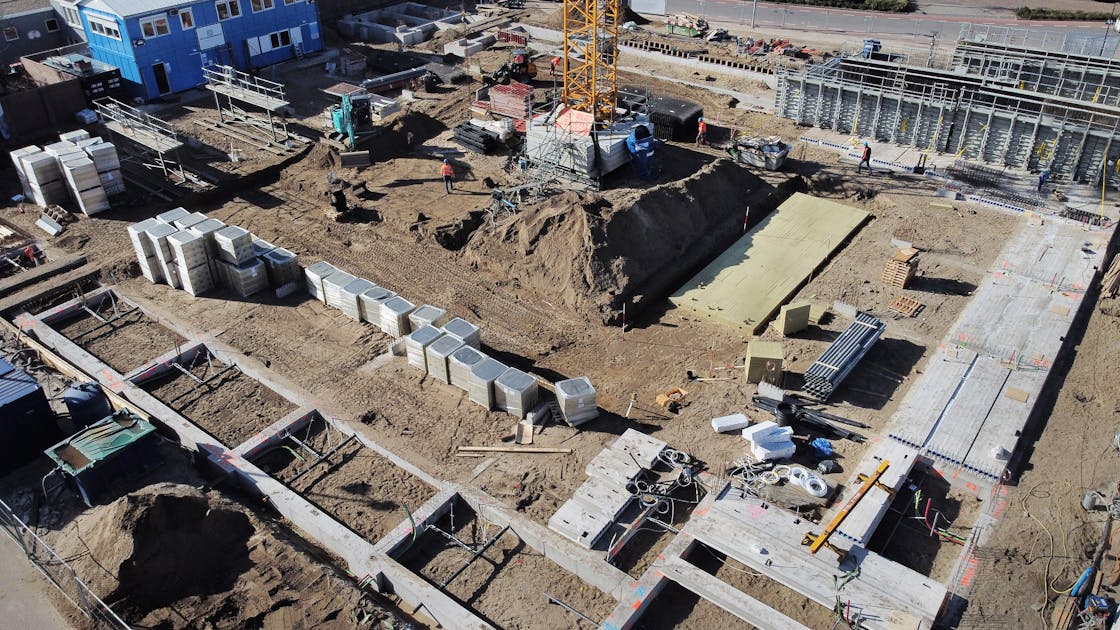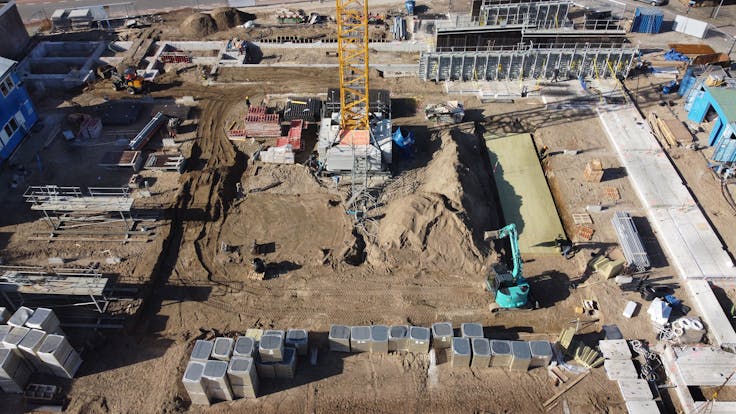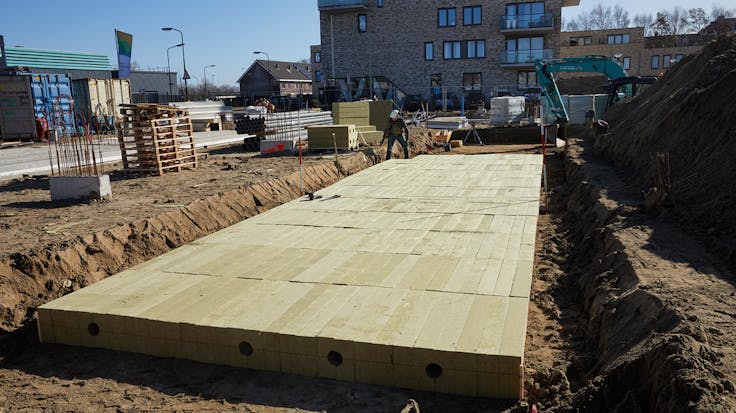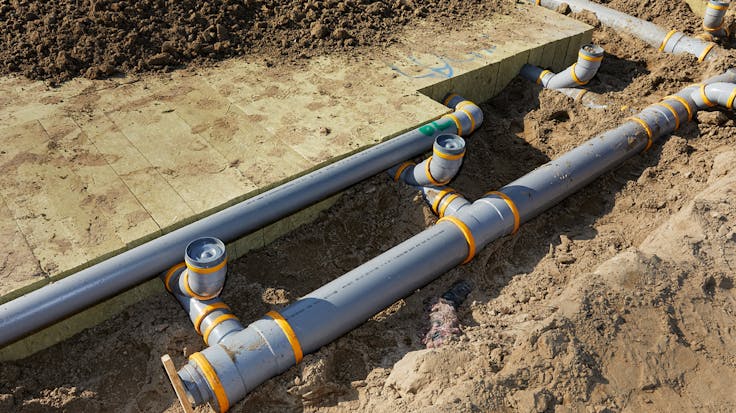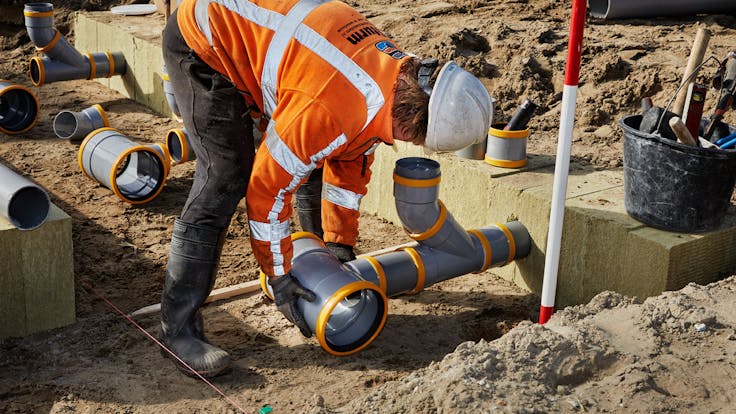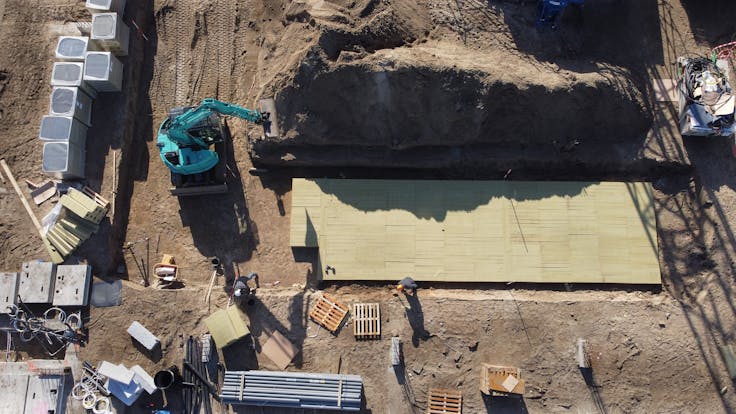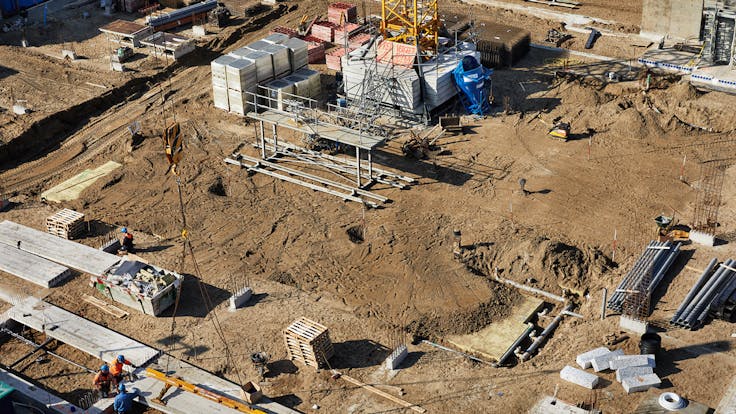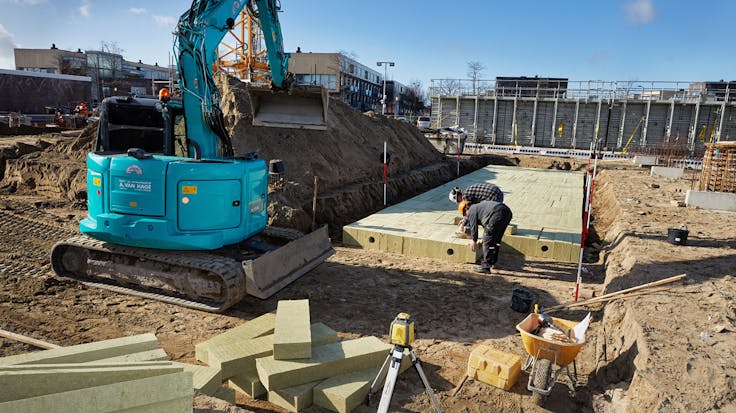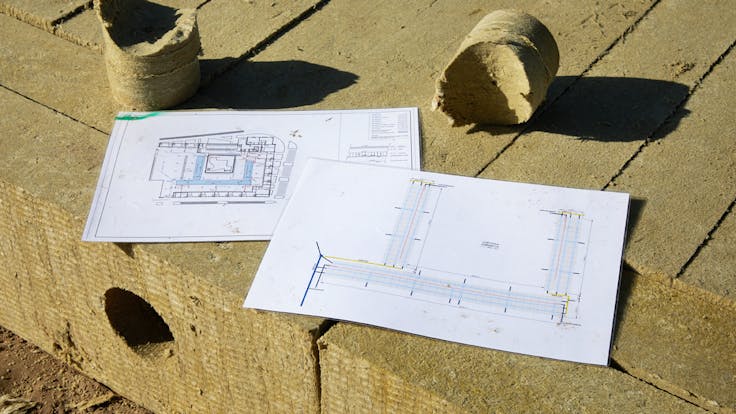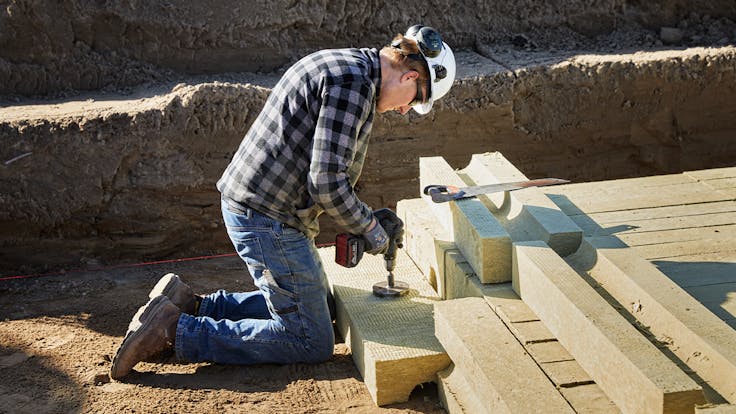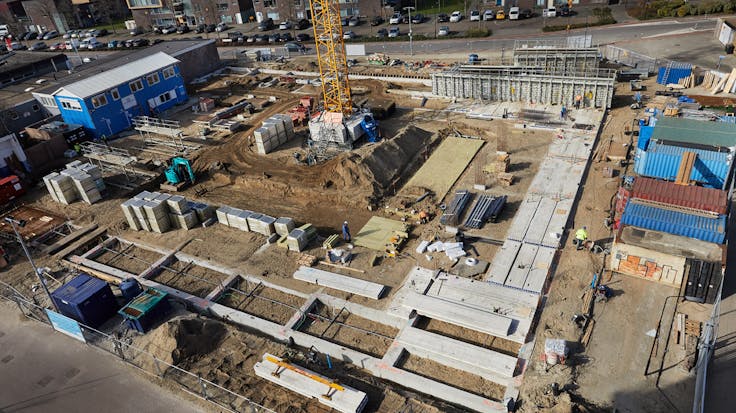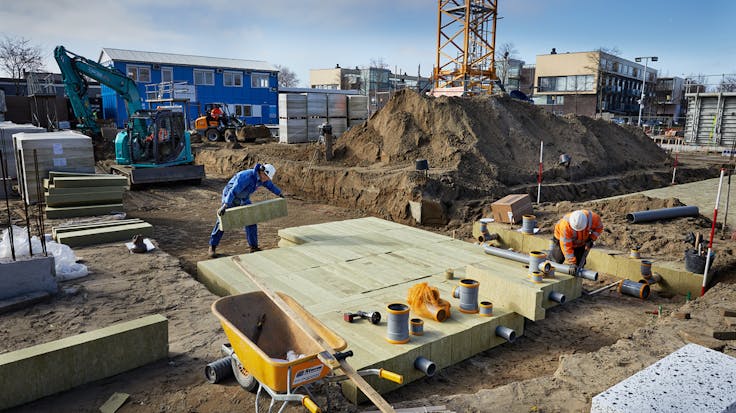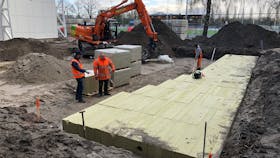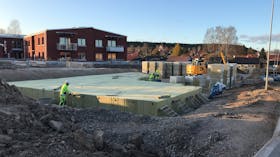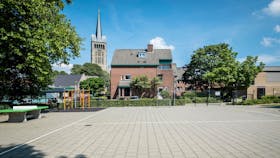In Beverwijk, the Netherlands, a new construction project is not allowed to discharge rainwater via the sewer system. The apartment building on De Brink with 94 sustainable, gasless homes will therefore be equipped with a Rockflow water buffer under the building and a water-buffering roof with stone wool elements under a sedum cover. The Rockflow buffer beneath the ground not only collects the water from the open plot surface, but also any overflow from the green-blue roof.
Flexible solution
“A fairly unique situation, in which stone wool is applied to both the roof and underground to meet the water storage assignment," notes Daan Los, technical advisor at Rockflow. “Originally the plan was to start working with a crate system, but during the design it became clear that Rockflow is a better solution. Due to the high groundwater level of approximately 85 cm below ground level, there is relatively little room to install an infiltration buffer for rainwater. In such cases, the flexibility of Rockflow is a major advantage. You are not tied to a fixed height for the elements and little cover is required. ” This resulted in a buffer, located under the indoor parking layer, between the columns of the building. The buffer has a total capacity of almost 100 m3.
